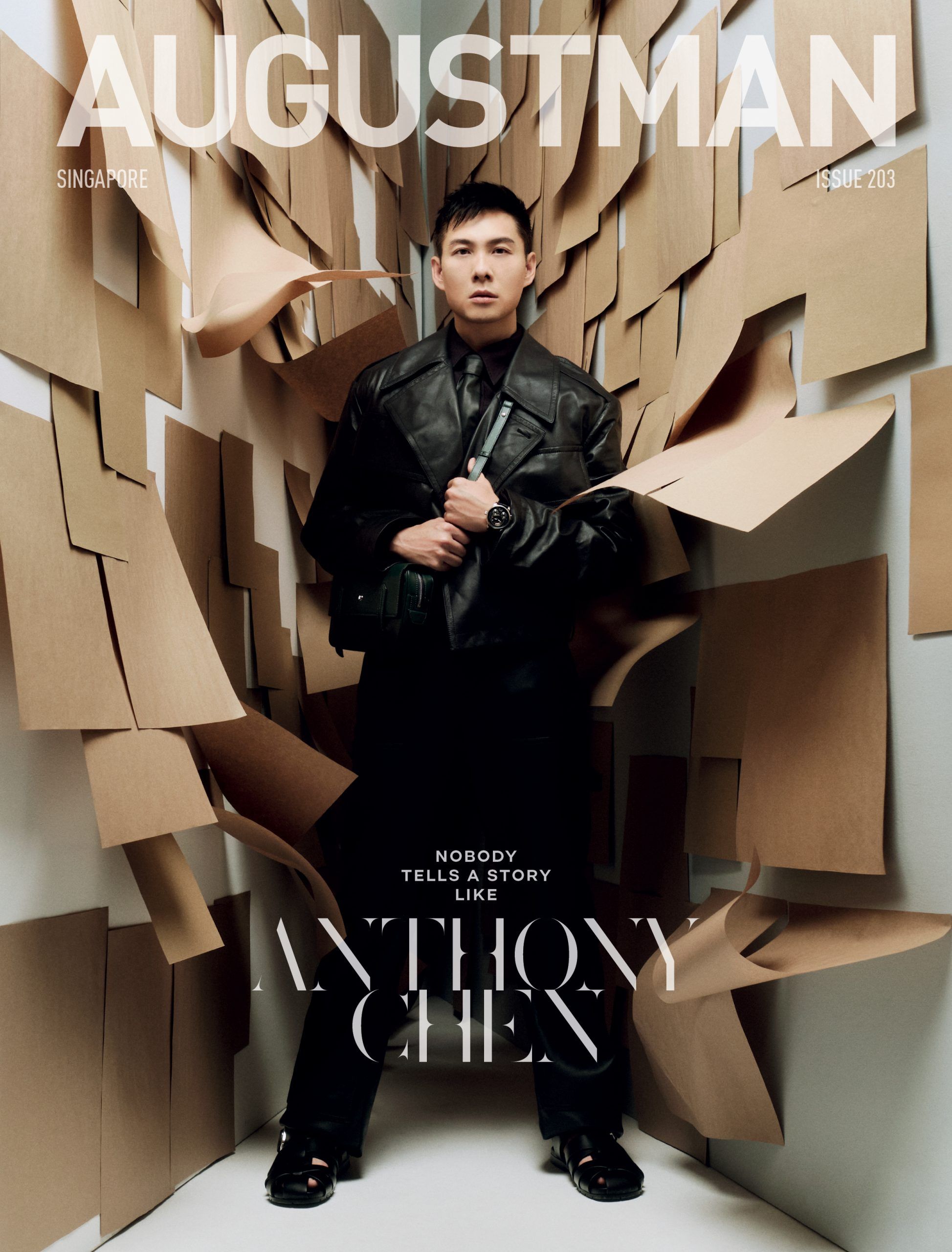Channelling Pocahontas with his love for nature and Alice in Wonderland’s curious mind, award-winning architect Aamer Taher’s childlike essence is the key to his artistic vision.
Aside from the wisdom lines that have slowly made their way onto his forehead, Aamer Taher barely looks a day over thirty. The years of experience in the industry have yet to dampen his exuberance and childlike essence. Like Alice in Wonderland, Aamer fell down the architectural rabbit hole.
Originally planning to pursue a more conventional route of engineering or business, it was the lure of fun that piqued his curiosity for architecture.
From his early years studying architecture at the National University of Singapore (NUS), Aamer moved to London in 1984 to train in the Architectural School of Architecture. Soon, he found himself practising amongst the prestigious, including Michael Hopkins & Associates.
Not long after, the Singapore 90s scene beckoned, ready for individual creative expression, and Aamer left behind the bustling London life to make his mark right here at home. Two years after moving back, boutique creative architecture firm AAMER Architects was born.
Drawn to the ability of buildings to improve life beyond the basic function of shelter, AAMER Architects’ aims to design houses that are unique in form and still embody the good values of tropical design.
Aamer always felt the need to introduce more creativity into the architectural landscape in Singapore. He believes that buildings should not follow current trends and instead be custom designed to the particular site and owner’s functional lifestyle.
Although not adhering to trends makes their market smaller, it is what makes AAMER architects retain the title of ‘boutique’ office. Clients who approach them know they are in for something beyond their expectations, and something out of the ordinary that is not easily replicated. In short, always special.
The houses Aamer designs are an extension of his playful character, renowned for their flair, curves and free-spiritedness. Although his homes exude an eccentric nature to them, Aamer is able to balance the fun with the function thanks to his keen artistic abilities that mesh well with his understanding of the natural elements.
Part of Aamer’s conceptualisation process includes spending time alone with the land, the trees and the surroundings to understand the site and what would best fit into it. By becoming one with nature, he is able to mould the form around what exists.
The inspiration that is derived from letting the elements speak to him is diverse, coming from nature, culture, and art.
How do you keep your design integrity, whilst still doing justice to your client’s vision and needs?
With any client, it is a collaboration of their needs and our ideas. Through lively discussions about design and the impact it has on their needs, we come to an amicable final solution. It helps that we don’t subscribe to any particular style in Architecture. I find it a rewarding challenge to achieve “a better version” of the client’s vision.
During the process of the ‘Merryn Road House’, the client wanted to be surrounded by nature although the plot was relatively small. Our solution was to create small outdoor landscape spaces at every level, with the pool on the roof where the distant views of nature reserves can be included as part of their ‘borrowed landscape’. Even the bathrooms were connected to plants and the outdoors.
If given the opportunity to impart the “natural” aspect you pride in, into our existing housing estates, what could Singaporeans look forward to?
We are already seeing how our newer housing estates are incorporating nature, parks, and water into their design and at different levels vertically. There will be even more of high-rise gardens in the sky, spaces to relax and relieve from our urban intensity.
I hope to see more mid-and high-rise ‘garden bridges’ linking housing blocks, thereby linking neighbours, not unlike the current garden bridges over the PIE to connect our wildlife reserves. Do the same for humans who also need the benefits of nature.
We already have rooftop community edible gardens. We could push for more, every rooftop as farms, over time, towards some level of food sustainability for our nation.
Which other architect would you allow to design your dream home?
That is tough, because I don’t think of a dream home for myself. If I do, I’ll probably build it myself! Actually, I dream of living over water, like the still houses of the offshore fishermen in Asia. A nice kampong house over water. There’s a Pritzker Prize Architect in Australia called Glen Murkett. His philosophy is to touch the land ‘lightly’. He’s never built over water, but I’m sure he would come up with an amazing design, probably on skinny stilts, as lightly as possible.
What drives you each day, knowing that only few can appreciate the art within architecture?
It’s knowing that the reach of art and its benefits are getting bigger and bigger every day. Actually, it also boils down to the benefits of a creative mind. I’ve always been intrigued by how the mind produces ideas.
My master’s thesis in Architecture school in London was called “The Mind’s Eye”. It was more about psychiatry and psychology than architecture. It was about the mind’s ability to assemble things it sees and experiences and produces from an original thing.
Tell us about your first project.
There are many first projects. My first Art project was in primary school, I was 9 or 10 years old where I was ‘commissioned’ by the class teacher to paint on the glass windows to block the intense sun. I kept at it for a week, painting imaginary cartoon characters in bright colours onto glass using acrylic. It was hugely successful as we had diffused coloured light filtering into our classroom, like the stained glass in churches.
Then, the principal asked for all the other classroom windows to be painted well and that I was to lead and direct the ‘project’. It was amazing. I selected the best of the art students in each class and gave them outlines and directions and supervised the whole thing, often missing or excused from the boring subjects like Maths because I had a ‘project’ to complete. Till today, I still smile when I think about it. That a naughty boy got acclamation from all at school for just having fun.
The younger generation constantly feel that art expression is more restrained, and don’t feel brave enough to pursue what they truly dream. How would you break that wall down for them?
They have to push themselves harder to prove that their ‘dream work’ covers all aspects of a successful project. When it comes to architecture, there are other considerations other than art, like the structural and functional aspects for example. To stand out, you need to be unique. To be unique, you need to be creative and very knowledgeable.
Knowledge and ideas are all around, and more than ever, so easily accessible. So, the ‘push’ you need is to make it your own. Fear of failing must never be an obstacle.
What realistic pieces of advice have you imparted to those looking to grow under your wing?
My ‘wing’ includes senior members who have been with me for many years. We run like a studio, where everyone is free to input opinions and ideas. We tell our interns to be outspoke, not to be shy. To learn from discourse and discussions. Singaporeans have always been known to be a shy bunch, but I see this changing.
So, the piece of advice that I always impart is, be like a sponge that absorbs as much as possible. I read somewhere that we humans actually use less than 10% of our brains, so there is plenty of capacity to take in a lot more.
As a role-model to budding designers and architects, what qualities are important for them to strive to reach greatness? How great do you have to be, to be happily accomplished?
Greatness boils down to your sense of achievement. To be accomplished, follow your instinct. That instinct must have been sufficiently groomed with skills and knowledge, the pursuit of which, has to be habitual and persistent.
How have you grown as an artist, an entrepreneur, and an individual over the years since your first project?
The trick is not to ‘grow’. I hope to always be the ‘happy child’. To always see the world with an inquisitive mind. To dream and imagine. To be happy with myself, my works, and to search for more. I’m extremely lucky that I love what I’m doing. The child in me wants to enjoy the process.
I don’t know about the entrepreneur thing. That just happened. As a small studio we wouldn’t call ourselves extremely successful but we certainly like what we do. The passion fuels the growth (of ideas). And we want to keep that up.
As an artist, I’m still searching for my identity. It is obvious that we don’t have an architectural design style, but certainly our process and values have been steadfast in the pursuit of originality. My art I think is becoming more abstract. Perhaps this jumble of thoughts will out as a muddle that hopefully will still be beautiful.
Beauty. Yes, beauty. I think over the years I have become more aware of the need to see beauty in the world, both from the outside and inside myself. I hope too that I have become a better, more beautiful person, thanks to the joy of creating.



